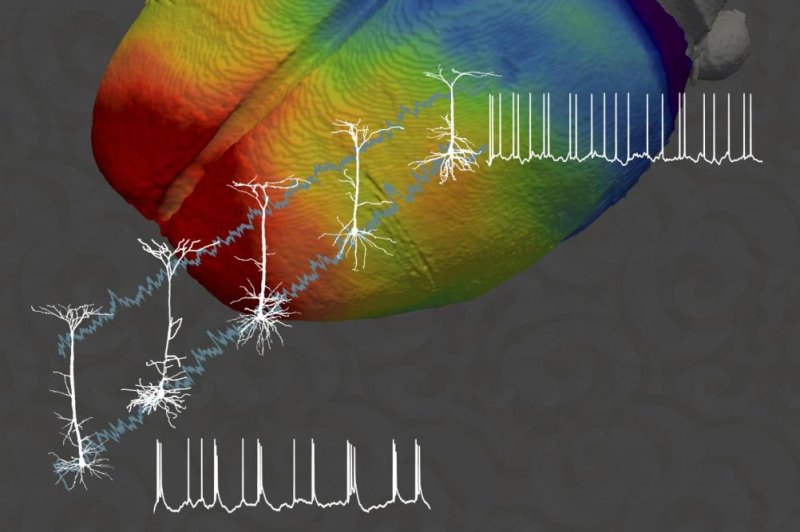Researchers found the same types of neurons worked differently in different parts of the rodent brain. The findings prove a neuron's function is dependent on its physical positioning. Photo by Fletcher/Queensland Brain Institute
Nov. 21 (UPI) -- How neurons process information is dependent on their positioning within the cortex, according to a new study by researchers at the University of Queensland.
Until now, neuroscientists agreed the microcircuits of neurons found in the brain's outermost layer, the cortex, functioned and interacted in a standardized way. Scientists thought the miniature circuits were more or less all the same.
But some researchers were skeptical. To find out if the same types of neurons performed the same functions, regardless of their location, scientists at the University of Queensland set out to measure the influence of cortex's structural characteristics on neuronal patterns.
The new survey revealed a surprising level of structural variety within the cortex. Researchers found the cortex gradually thickens from the back of the brain to the front. Scientists also measured thickness variety within a single functional area of the brain.
Further investigation showed the thickness of the cortex alters the shape of individual neurons. In thicker parts of the cortex, neurons are elongated.
When scientists looked at how neurons with different lengths worked, they found their shape altered the way the neurons process information.
To interpret information, neurons most not only receive information related to sensory experiences, they must also compare those inputs to an internally generated model of the world. Thus, some neurons must be able process two sets of inputs.
Researchers found longer neurons are capable of doing just that. Shorter neurons, even the same types of neurons, weren't able to process two sets of inputs. Shorter neurons featured only a single integration zone for processing sensory data.
Tests showed how a neuron processed information was dependent on its position within the cortex.
"It turns out that they work quite differently," Queensland professor Stephen Williams said in a news release. "Electrically they're even more distinct than we thought."
Researchers described their discovery this week in the journal Neuron.
"Our work demonstrates that the thickness of the neocortex governs not only the anatomical structure of neurons, but also their electrical properties," researcher Lee Fletcher said. "The findings reveal the complexity of computational strategies employed in neocortex, and suggests the neocortex is composed of computationally flexible circuits."
In future studies, scientists hope to determine how neuronal differences impact cognition and behavior.
The authors of the new study think the differences may explain why rodents respond differently to similar but slightly different stimuli. Mice, for example, react more quickly to stimuli from above, like a passing shadow.
Shorter neurons may process sensory information more efficiently when an immediate reaction is necessary, like scurrying for shelter when the shadow of an owl passes overhead. Fight-or-flight stimuli don't need to be integrated and compared with an internal model.
"Information processing may not be useful in such a system, rather what may be required is instinctive reaction," Williams said. "To detect and react to predators, a hard-wired system that works efficiently and very fast may be of survival value. So one idea is that these small neurons are supersensitive to inputs coming in."















